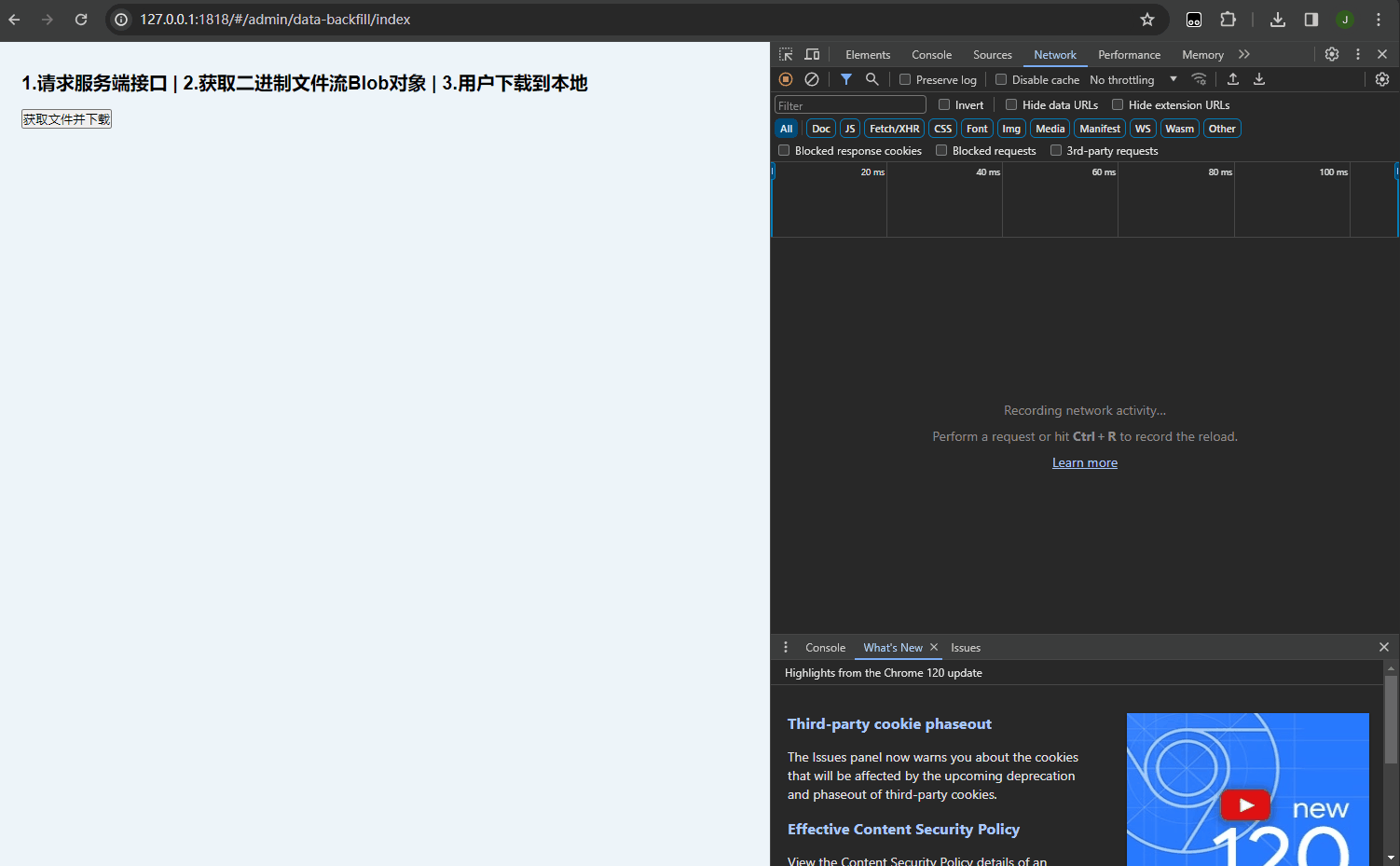1.window.open
我最初使用的方法就是这个,只要提供了文件的服务器地址,使用window.open也就是在新窗口打开,这时浏览器会自动执行下载。
2.a标签
其实window.open和a标签是一样的,只是a标签是要用户点击触发,而window.open可以主动触发
后端如果设置了Content-Disposition ,那么不需要download属性也能下载。而且后端还可以设置文件名。
<a href="https:xxx.mp4" download="test">下载文件</a>
3.xhr(axios)下载
这个时候,请求发送的时候需要注明responseType = "blob",如果没有设置的情况下,new Blob的时候需要传入第二个参数。比如new Blob([res], { type: xhr.getResponseHeader("Content-Type") });
只是这时后端就没法通过body报错了。只能通过状态码和响应头来传递信息了。
最后我还是选择用json来传递信息,设置这个responseType: 'blob',以后,返回值会被转为blob,这时我们log可以看到type,是application/json的情况就是报错的情形。然后我们转化一遍json可以拿到报错信息,其实也可以把这个逻辑加到axios拦截器里面
export const DOWNLOAD_ITEM = async (data: FileItem): Promise<any> => {
const res: Blob = await request.post(`${PROXY_SUFFIX}/downloadItem`, data, {
responseType: 'blob',
})
// json的情况说明是报错
if (res.type !== 'application/json') {
downloadFile(res, data.name)
} else {
const r = await res.text()
message.error(JSON.parse(r)?.msg)
}
}
这边我后端用的是golang的gin框架
返回文件流调用c.File,文件类型不用传,c.Header("Content-Disposition", "attachment; filename="+req.Name)这个设置可以返回文件名。文章来源:https://www.toymoban.com/news/detail-821271.html
func (f *FileListAPI) DownloadItem(c *gin.Context) {
var req response.FileInfo
err := c.ShouldBindJSON(&req)
if err != nil {
response.FailWithMessage(err.Error(), c)
return
}
if req.Path == "" {
response.FailWithMessage("路径不能为空", c)
return
}
if req.IsFolder {
response.FailWithMessage("路径不能为文件夹", c)
return
} else {
c.Header("Content-Disposition", "attachment; filename="+req.Name)
// c.Header("Content-Transfer-Encoding", "binary")
// c.Header("Content-Type", "application/octet-stream")
c.File(req.Path)
}
fmt.Println("req", req)
}
下面是blob对象下载的逻辑,使用createObjectURL转换为url,然后绑到a链接上,通过点击a链接的方式触发下载。文章来源地址https://www.toymoban.com/news/detail-821271.html
/**
* 使用bolb方式下载
* @param res
* @param filename
* @returns
*/
export function downloadFile(res: Blob, filename: string) {
const url = window.URL.createObjectURL(new Blob([res]))
const a = document.createElement('a')
a.style.display = 'none'
a.href = url
a.download = filename
document.body.appendChild(a)
a.click()
document.body.removeChild(a)
window.URL.revokeObjectURL(url) // 释放blob对象
}到了这里,关于【前端】下载文件方法的文章就介绍完了。如果您还想了解更多内容,请在右上角搜索TOY模板网以前的文章或继续浏览下面的相关文章,希望大家以后多多支持TOY模板网!







